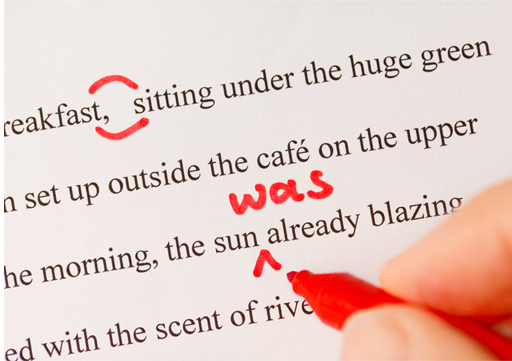4.1 Proofreading
An essential part of written communication is proofreading what you have produced. This is to ensure that you have not made any mistakes in your text.
In everyday life, it is common to skim read texts to identify what you are looking for in a piece of written communication. This means that you may not always read entire words and sentences, but you still understand the gist of what is being said. This is a different skill to proofreading.
Sometimes the words you have used are not incorrectly spelled, but are not the correct words in that particular context. For example, if you were skim reading you may not notice that you have written ‘reminder’ instead of ‘remainder’. It is important not to rely on technology to pick up errors as spell checkers wouldn’t see this as a mistake. Therefore, proofreading involves focusing on each word to ensure that it reads correctly in the context of the rest of the text.
How many times have you written an email or a text message and realised after you sent it that there was an error, such as a spelling mistake or the wrong date? Reading your text with a ‘critical eye’ will help to minimise these errors. Even if you are in a hurry, it is worth the extra few minutes taken to read through your communication. The implications of a mistake could be quite serious. Imagine that you have sent an email to your line manager which has a number of spelling and grammatical errors. Your manager may conclude that if you cannot write a clear and coherent email you may be poorly representing the company.
As Rebecca explained in the video, one spelling mistake in a job application could be enough to put you on the reject pile.
Have a go at the activity below to practice your proofreading skills. Remember that proofreading is not only looking for spelling errors, but grammatical ones too, including the appropriate use of punctuation and tenses.
Activity 4 Practising your proofreading skills
Can you identify the errors?
Proofreading task:
Most people take their digital cameras within them when they go on holiday or shoot quick snaps on the mobile phones. But, more often then not, the results can be disappointing. This is because most cameras aren’t set up correctly, the subject is poorly framed, or the flash is set to Automatic when it should be Disabled. Fortunately, a few simple techniques, can help you take better photos the next time you travel.
Discussion
Most people take their digital cameras with them when they go on holiday or shoot quick snaps on their mobile phones. But, more often than not, the results can be disappointing. This is because most cameras aren’t set up correctly, the subject is poorly framed, or the flash is set to Automatic when it should be disabled. Fortunately, a few simple techniques can help you take better photos the next time you travel.
As well as more formal types of written communication, such as reports, you may be required to engage with informal formats such as social media posts. This will require a different writing style altogether. You’ll find out more about those in the next section.

